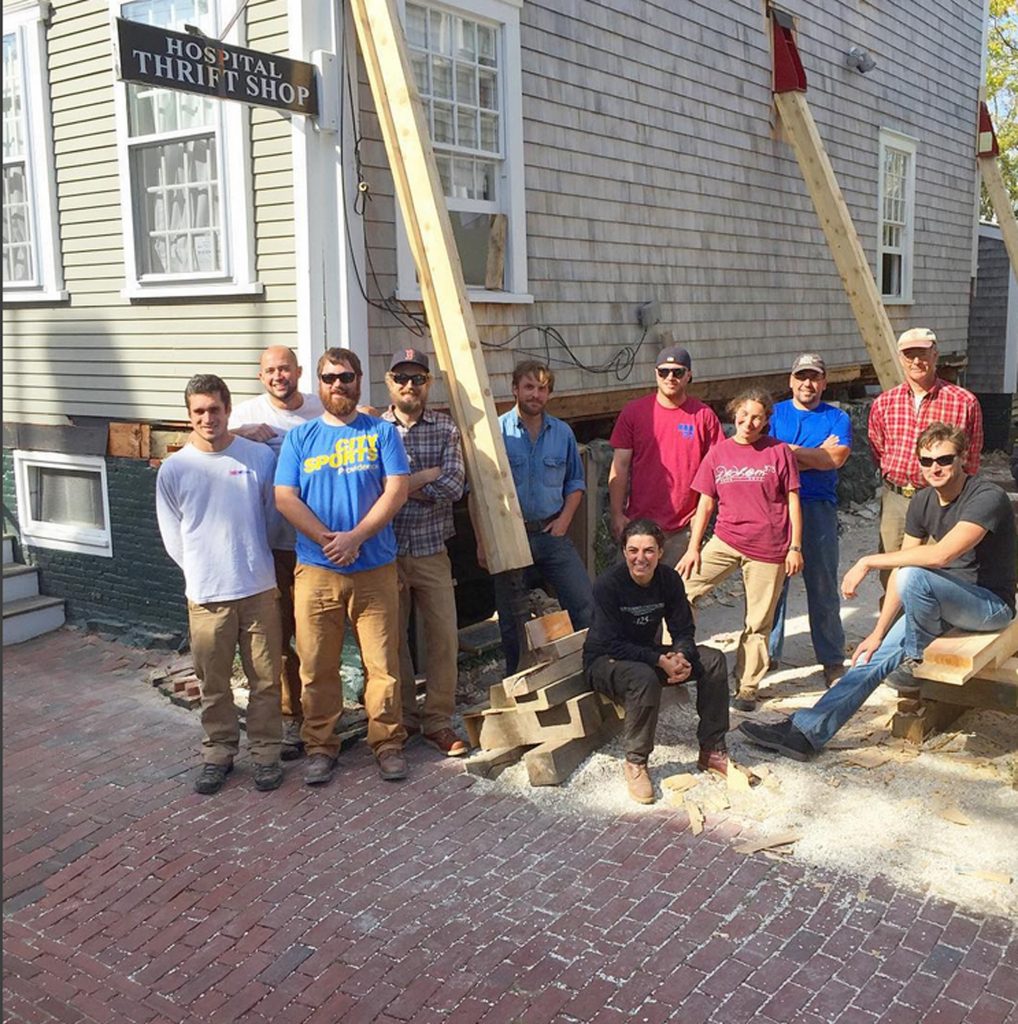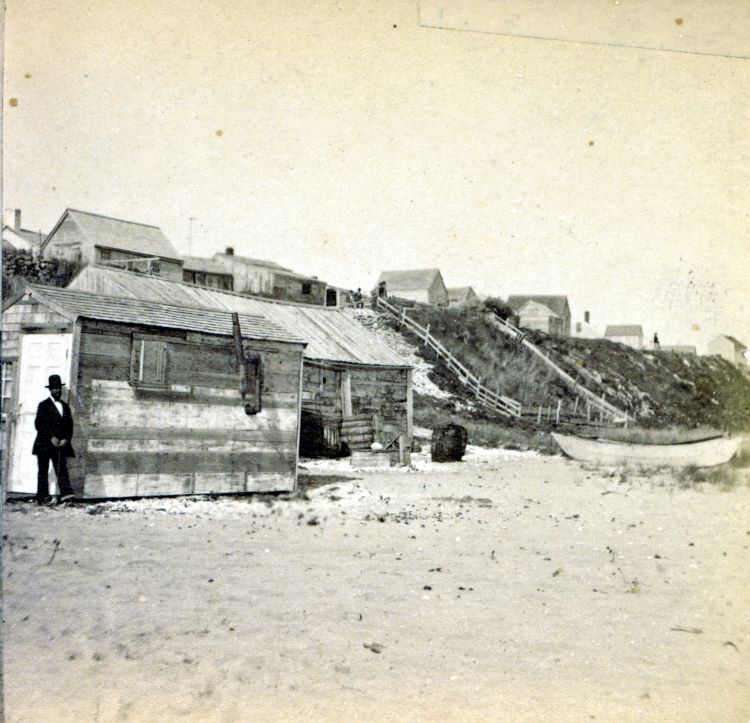
Tucked away on the far eastern edge of Nantucket, Codfish Park is one of the island’s most interesting neighborhoods. Codfish Park did not actually exist until the late 19th Century. The beach below the ’Sconset bank was narrow and precarious. The October Gale of 1841 undercut ’Sconset’s bank, causing several houses to give way to the sea. Other houses were moved out of harm’s way to other areas of the village.
In the decades following the October Gale, the beach accreted naturally. Soon, the beach became an area for boat storage and fishing shacks. This land below the bank belonged to Henry Coffin, who deeded it to the Proprietors of Nantucket in 1886. Three trustees were given the power to regulate the beach.
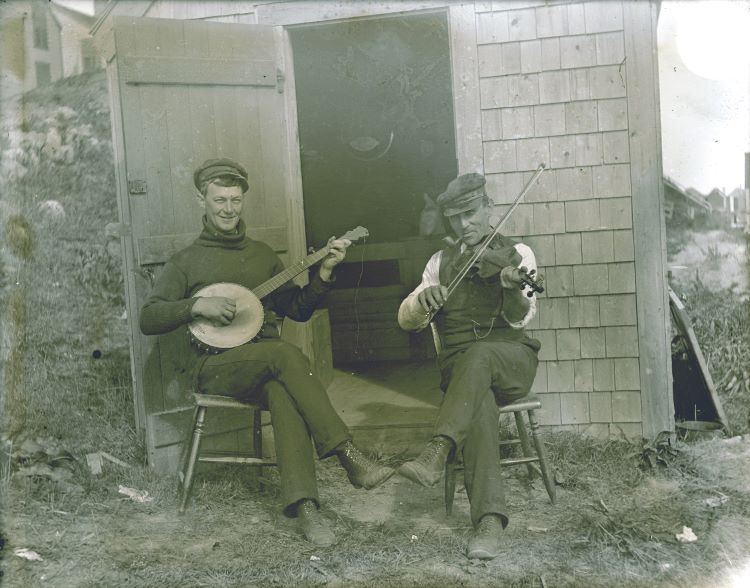
This land was to be used to public enjoyment, and one of the stipulations of Coffin’s deed was that “no building or other obstruction of any kind be erected or maintained on the premises, except bath houses, to be used as such.” The beach grew quickly, tripling in size in three decades. It wasn’t long before fishermen erected cottages, shacks, and drying racks.
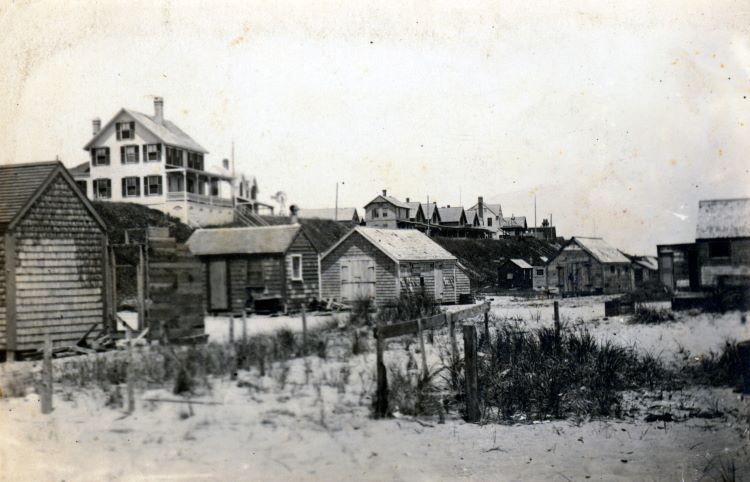
By the turn of the 20th Century, Nantucketers watched with interest as Codfish Park began to develop. In June of 1906, the residents “below the bank” received permission from the Selectman to tap the town’s water supply and establish a drinking fountain. Cement sidewalks were laid in 1911 and streetlights were installed in May of 1920, as were three telephone poles. But much of the neighborhood evolved organically, with no expert intervention.
A May, 29, 1915 observation in The Inquirer & Mirror perhaps best describes the evolution of the neighborhood:
It is a most entertaining study in village enlargement, which hamlets in the far western mining districts would take off their hats to. No civil engineers have yet been called in; no landscape gardeners have yet been required; no architects of high technique have been employed; no highfalutin specialists of any sort have entered the evolution of the Park. Yet each year the new coming is confronted with remarkable and unexpected changed. This year opens with several cases of slat fences enclosing the adjacent door-years. We see, also, the handiwork of the house painter in some sections. In other places may be seen little spots under cultivation for flowers, climbers and shrubs…Here there is a little touch of special architectural features and there are to be noted utility and convenience with any ideas of architectural harmony left out of the question. Poultry culture is a prominent feature. In the line of town history, it may be stated that Manuel Thomas, at No. 13 Atlantic boulevard, owns and occupies the first dwelling ever placed in the Park, while his garage, at No. 9 same thoroughfare, was originally Capt. George Coffin’s fish-house, and was the first building ever erected on the Park lands, having been moved from the bank, above, when Nature started to enlarge ’Sconset’s territorial area by building the Park. Close students of nature find much to entertain them in watching the Park panorama, whose every inhabitant appears happy.
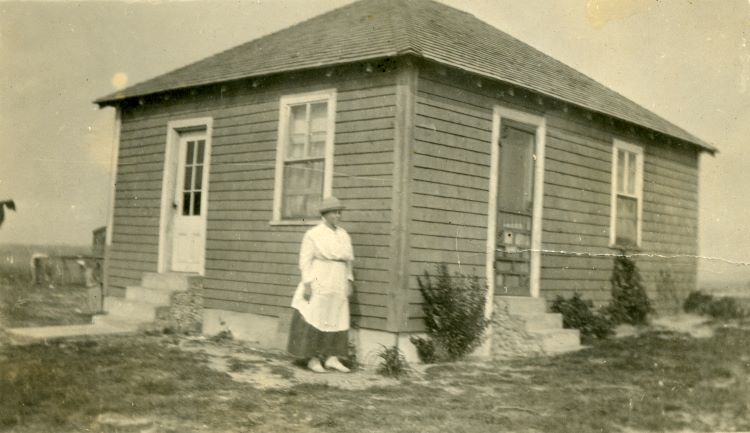
Codfish Park house, c. 1930s. (NHA image.)As the folks who originally built on Codfish Park were building on land that was held in public trust, they held no title to the land beneath their homes. By 1925, the paper reported “there are some thirty-eight squatters…one by one, the buildings in Codfish Park have multiplied until there are some thirty-eight buildings occupying land which was reserved as park land by the grantor forty years ago.” The question of what to do with the buildings hung in the air. If the dwellings were removed, were would the residents (many of whom were domestic workers, cooks, laundry workers, drivers, and performed other jobs critical to the needs to of the people who vacationed “above bank”) go? The Town was concerned that other similar villages would sprout up on public land.
As long as the land was held in trusteeship, the town could not gain tax revenue from the residents of Codfish Park. However, if the trustees would relinquish certain rights to the Town, the parcels could pass through the Land Court and the property could become taxable.
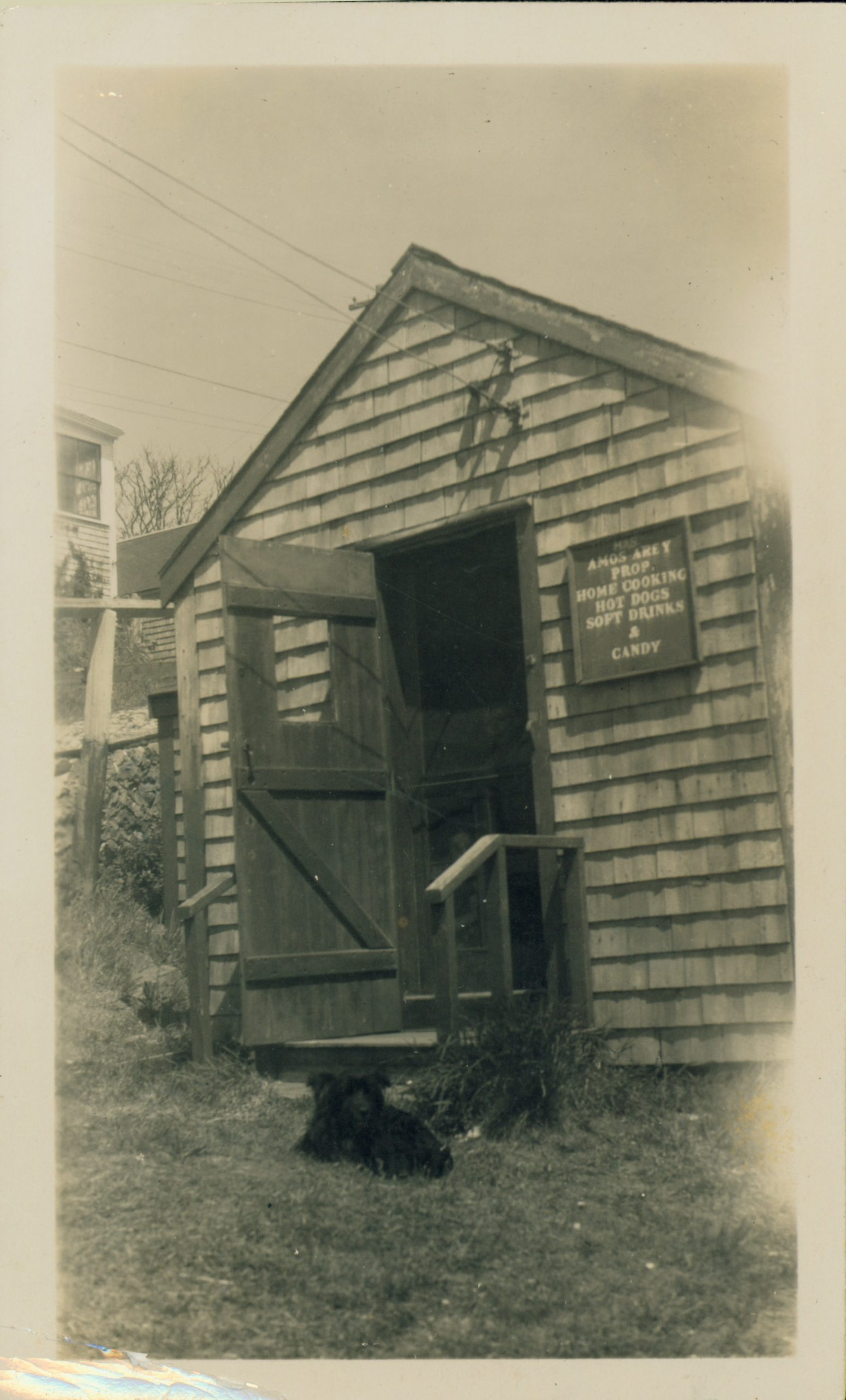
This problem lingered for decades. By the 1960s, the Codfish Park residents paid taxes to the town. By 1990, about 40 residents of Codfish Park had been able to register their land through Land Court. But 13 parcels remained unregistered as of 1990. A 1991 Annual Town Meeting Vote dissolved the Codfish Park Trust.
Because of these complicated issues surrounding Codfish Park, tracing the date of a single structure can be difficult. In the case of 10 Beach Street, one of its earlier owners, William Jernegan, seems to have attempted to register the land in 1923 in Land Court Case 9499.
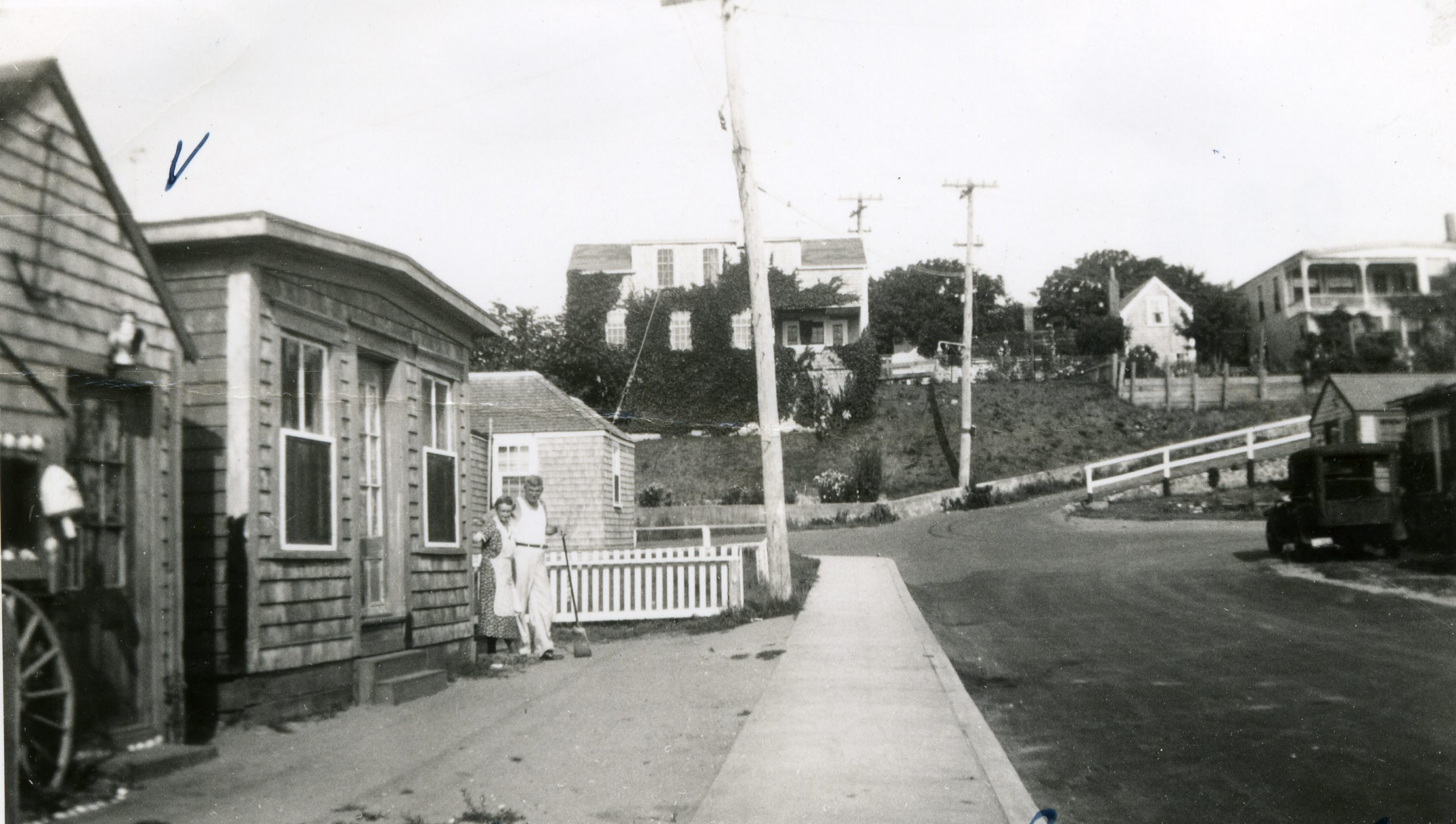
Jerengan owned the William Jernegan Ice Company that operated out of 3 New Street in ’Sconset. That building later became the Srail Club, a men’s social club established to foster comradely between year-round and summer men.
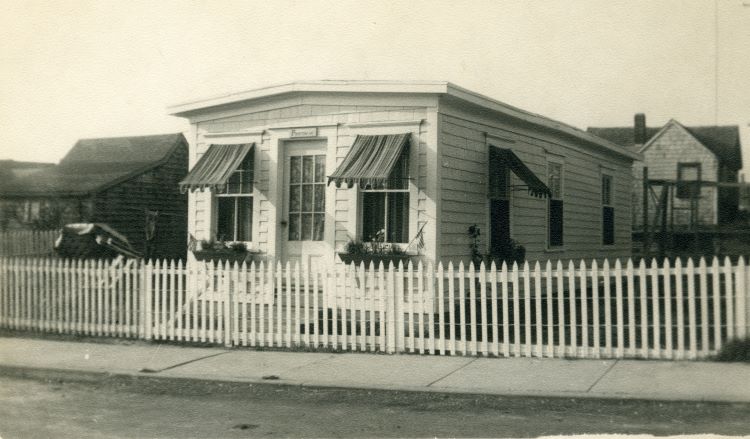
Jerengan sold 10 Beach Street in 1942 to Constance Viola Greene Haroldson and Byrnjulf Haroldson (Book 109, Page 539) The Haroldsons called the house “The Pomptonian” as they were from Pompton Lakes, New Jersey. Their daughter, Jaqueline Seidel, owned the property until recently. 10 Beach Street was formerly released from the Siasconset Beach Trust to the Seidels in 2010. (Book 1249, Page 153)
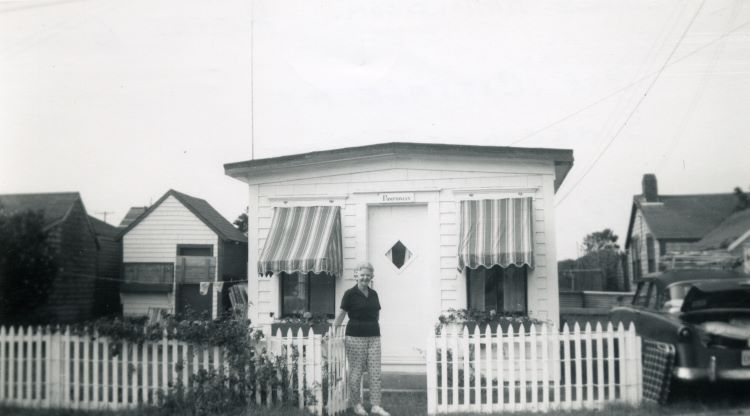
10 Beach Street is a simple structure and a reminder of Codfish Park’s origins. Codfish Park was a historically diverse community, with families of African-American, Cape Verdean, Irish, and other backgrounds who were critical to life in the village. And Codfish Park itself was a vibrant community with a pool house, dance hall, laundry, sweet shop, barber shop, and other amenities.
While the population of Codfish Park has changed over time, the historic character defining features of the neighborhood, and individual structures like 10 Beach Street, deserve to be protected.



